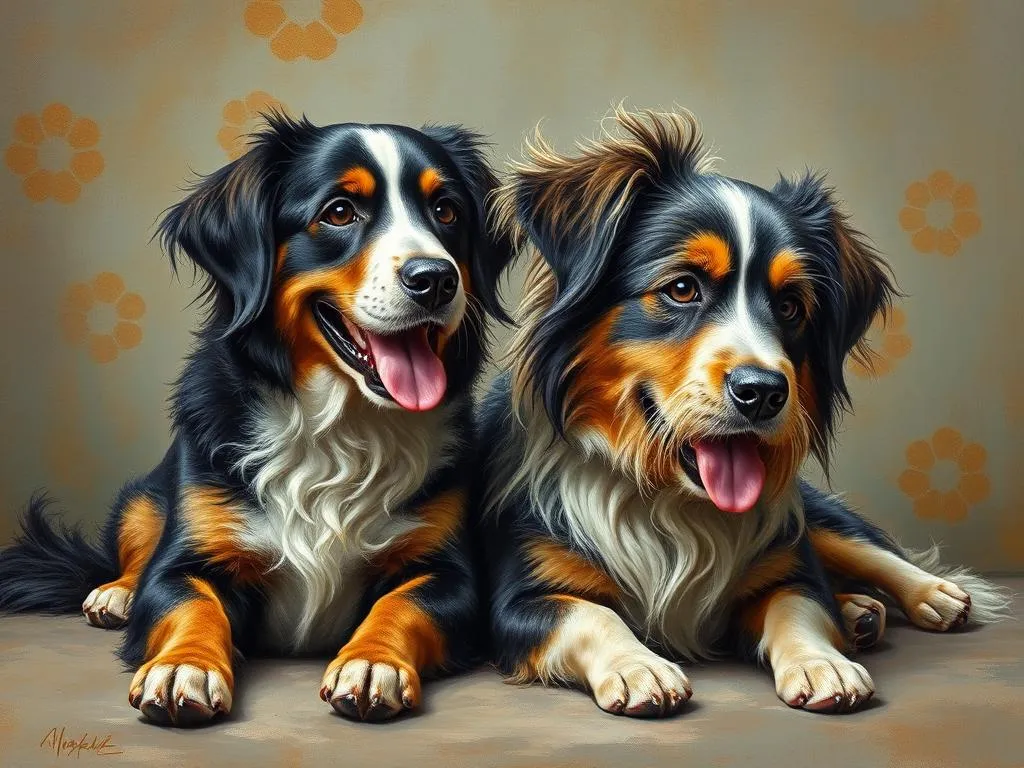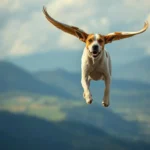
In recent years, the concept of painting with dogs has captured the hearts of pet owners and art enthusiasts alike. This delightful trend combines the joy of artistic expression with the companionship of our furry friends, creating a unique way to bond with our beloved pets. With the rise of pet-friendly activities, more people are discovering that engaging in creative pursuits with their dogs can be both fun and therapeutic. The benefits of art extend beyond just the canvas; they can enhance our emotional well-being while fostering a deeper connection with our pets.
The Joy of Painting with Dogs
Understanding the Bond
One of the most profound aspects of being a pet owner is the emotional connection we share with our dogs. This bond can be strengthened through shared activities, and what better way to do that than through the creative process of painting with dogs? Engaging in artistic endeavors together allows for a unique form of interaction, where both pet and owner can express their personalities and emotions.
When we paint with our dogs, we invite them into our world of creativity, creating a joyful atmosphere that encourages exploration and playfulness. Each stroke of the brush or paw can reflect the individual quirks of our pets, allowing us to appreciate their unique traits even more.
Benefits of Art for Pet Owners
Artistic expression offers numerous mental health benefits, making it an ideal activity for pet owners. Creating art can be a powerful form of stress relief and relaxation. The meditative nature of painting helps to quiet the mind and allows for a more profound sense of peace. When combined with the companionship of a dog, the experience becomes even more enriching.
Moreover, the act of painting can serve as a form of self-expression, allowing pet owners to channel their feelings into something tangible. Whether it’s joy, sadness, or nostalgia, art provides a medium to explore and express these emotions, fostering a deeper understanding of ourselves and our relationships.
Preparing for Your Dog-Friendly Painting Session
Choosing the Right Location
The first step in a successful painting with dogs session is selecting an appropriate location. Both indoor and outdoor spaces can work, but each has its pros and cons. Indoors, you can control the environment, minimizing distractions like other animals or loud noises. A large room with ample natural light can be an excellent choice. However, if your dog thrives in the outdoors, consider setting up in a spacious backyard or park. Just be mindful of the weather and potential distractions like squirrels or other dogs.
To minimize distractions, create a designated painting area. Use a tarp or old blanket to protect the surface underneath, and ensure the space is free from clutter. Setting up in a quiet, familiar area can help both you and your dog feel at ease.
Essential Supplies
Before diving into your painting session, gather the necessary supplies. Here’s a checklist to guide you:
- Painting materials:
- Non-toxic paints (acrylic or watercolor)
- Brushes in various sizes
- Canvases or thick watercolor paper
- Palettes for mixing colors
- Water containers for brush cleaning
- Dog-friendly art supplies:
- Non-toxic, washable paints specifically designed for pets
- Paw print pads (available at pet stores)
- Safety gear for dogs:
- Old t-shirts or smocks to protect their fur
- Dog mats or blankets to define their area
Getting Your Dog Ready
To ensure a smooth painting session, it’s essential to prepare your dog as well. Begin with a good exercise routine to expend some of their energy. A long walk or play session will help them settle during the creative process. Additionally, consider using calming techniques, such as gentle massaging or playing soothing music, to create a relaxed atmosphere.
Create a comfortable environment for your dog by providing their favorite blanket or bed in the painting area. Familiar toys can also help them feel at ease and engaged while you focus on your artwork.
Techniques for Painting with Dogs
Interactive Painting
One of the most exciting aspects of painting with dogs is the opportunity for interactive painting. This technique involves actively engaging your dog in the creative process, resulting in a unique collaborative masterpiece.
- Set up your materials in your chosen location, ensuring everything is within reach.
- Encourage your dog to explore the painting supplies. Let them sniff the paints and brushes, familiarizing them with the materials.
- Introduce non-toxic paints to your dog’s paws. You can use a paw print pad or gently dip their paw into the paint.
- Guided participation: Allow your dog to walk across the canvas, creating paw prints as they move. For added fun, guide them on a leash to create specific patterns.
- Let the creativity flow! Encourage your dog to explore the canvas, and embrace the randomness of their movements.
Using Dog Paws for Art
Creating artwork with dog paws is a delightful technique that highlights their unique prints. Here’s how to get started:
- Prepare the workspace: Lay down a canvas or thick paper on your protected surface.
- Choose your colors: Select non-toxic paints in colors you love.
- Apply paint to your dog’s paws: Gently paint one paw at a time, ensuring coverage without overwhelming them.
- Create paw prints: Press their paw onto the canvas, applying gentle pressure to ensure a clear print.
- Experiment with patterns: Use different colors and combinations for varied effects. You can also create a paw print border around the canvas or have your dog step through paint and walk across the canvas for a more abstract design.
Collaborative Artwork
Creating collaborative artwork with your dog allows for a beautiful fusion of creativity. Here are some ideas to inspire you:
- Movement-based art: Encourage your dog to move freely while you paint around them, capturing their movements with your brush.
- Incorporate toys: Use your dog’s favorite toys or objects to create shapes and designs. For instance, dip a ball in paint and roll it across the canvas.
- Textural elements: Incorporate materials like leaves or twigs to create texture on the canvas while your dog adds their own paw prints.
Tips for a Successful Painting Session
Setting Realistic Expectations
When you embark on the journey of painting with dogs, it’s essential to set realistic expectations. Remember that the process is more important than the final result. Allow yourself and your dog to explore freely, encouraging spontaneity and creativity. Celebrate the unique moments of joy rather than focusing solely on the artwork.
Keeping Your Dog Engaged
Keeping your dog engaged during the painting session is crucial for a successful experience. Here are some suggestions:
- Rotate activities: If your dog seems restless, switch to a different activity, such as a short game of fetch or tug-of-war.
- Incorporate breaks: Allow for breaks to refresh both you and your dog. Use this time to reward them with treats or cuddles.
- Keep it fun: Maintain a playful and encouraging atmosphere to keep your dog excited about the process.
Documenting the Experience
Capturing the painting process through photos or videos can add to the fun of your creative session. Here are some ideas for documenting your experience:
- Take progress photos: Snap pictures at different stages of the artwork to create a visual story.
- Share on social media: Use platforms like Instagram or Facebook to showcase your creative journey. Tagging your artwork with painting with dogs can help connect with fellow pet art enthusiasts.
- Create a scrapbook: Compile your artwork and experiences into a scrapbook, preserving memories for years to come.
Post-Painting Care
Cleaning Up
After a fun painting session, it’s time to clean up. Here are some tips to ensure a safe and tidy environment:
- Gather all painting supplies and clean brushes with water or soap, depending on the type of paint used.
- Dispose of any used paper towels or materials responsibly, ensuring that no toxic substances remain within reach of your dog.
- For your dog, use a damp cloth or pet-safe wipes to clean their paws. Regular grooming sessions can also help remove excess paint from their fur.
Reflecting on the Experience
Taking the time to reflect on your painting session can enhance the overall experience. Consider journaling about what you enjoyed, what worked well, and any challenges you faced. Sharing your experiences with friends or fellow pet owners can also provide valuable insights and encouragement.
Encourage feedback from family members or friends who witnessed the session. Share your artwork with them and discuss the creative process, inviting constructive criticism and new ideas.
Conclusion
Engaging in painting with dogs is not just an artistic endeavor; it’s a celebration of the bond between pet and owner. Through this unique experience, we can enjoy the therapeutic benefits of creativity while fostering deeper connections with our furry friends. As you embark on this joyful journey, remember to embrace the spontaneity and joy that comes with each brushstroke and paw print. So grab your paints, invite your dog, and let the creativity flow!









